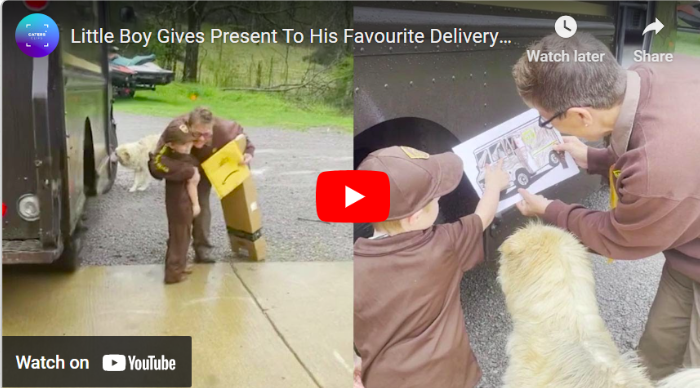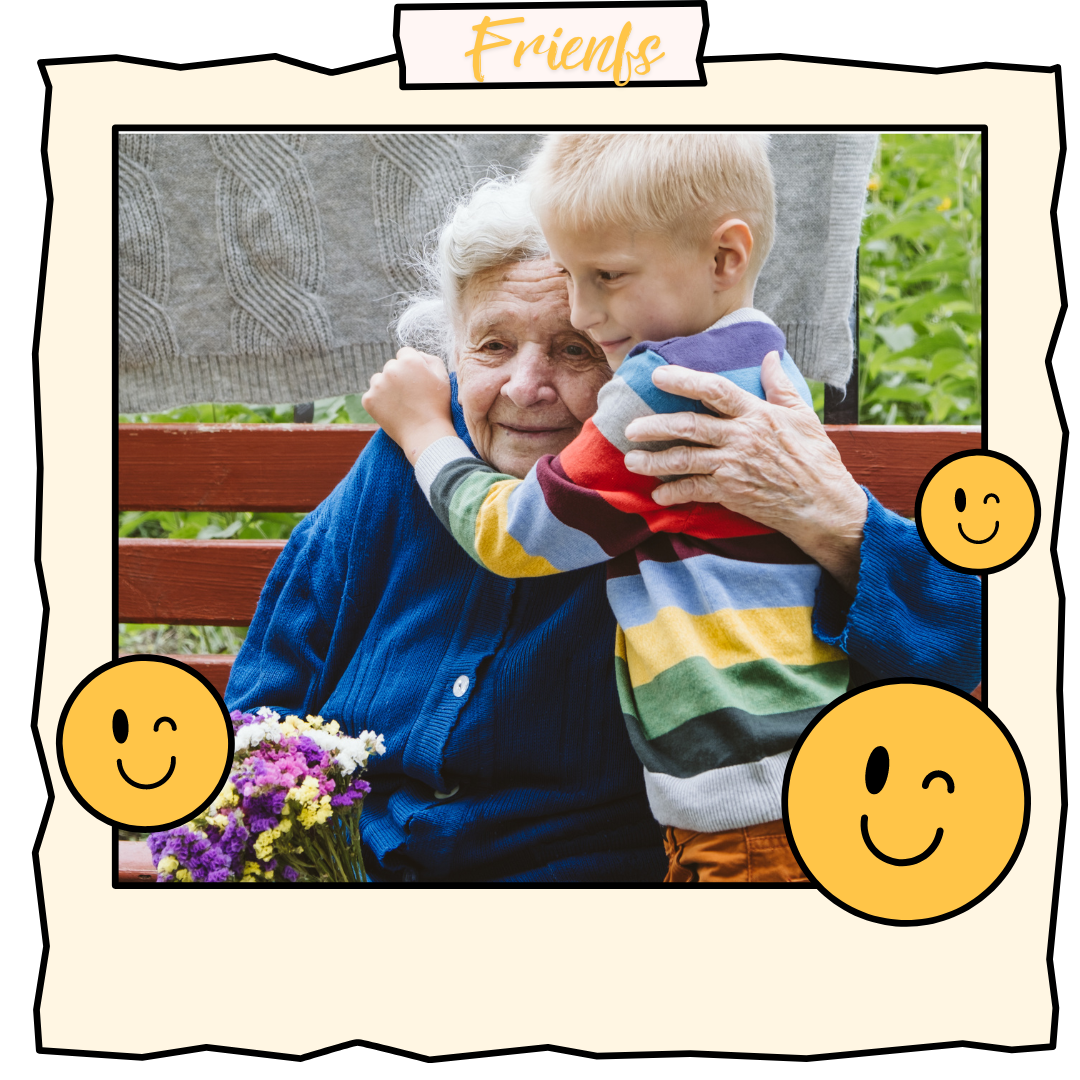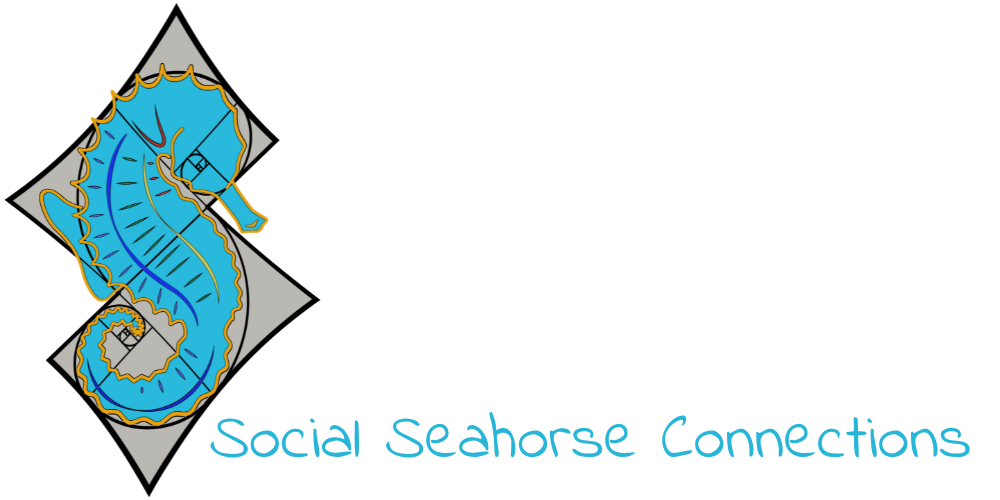
Photo Credit: Screenshot of YouTube cover image for Little Boy Gives Present To His Favourite Delivery Driver post.
A little boy decked out in a complete mini UPS delivery uniform races down his porch stairs, manilla envelope in hand, yelling, “Miss Theresa!”
The delivery driver is as delighted to see him as he is to hand her his present, and she gives him a big hug.
Before she can get the envelope open, he eagerly starts telling her all about the picture of the truck he made with a door that opens to reveal the packages inside. Even the family dog is right there in the middle of the joy-filled interaction.
It’s a special interaction between generations shared on social media, and it’s the kind of connection that can be replicated by anyone.
It shouldn’t be thought of as a unique experience. Let’s take a look at the who, what, when, where, why, and how of special people interactions.

Special people
Believing it is important for children to have a chance to connect with older individuals, I began thinking of ways to try to replicate the grandparent relationship for my kids in our local community. I realized one day that they were surrounded by elderly people in our small faith community and created a special people project for them.
We had three elderly people in the community without young people in their lives; one had never had any children of her own. We called them my boys’ special people.
Thinking back now, I’m not sure if the initiation of this was to provide my sons with grandparent-like interactions or to
provide lively interactions for the special people to let them know they were vital members of the community. In the end, I can say that the results have gone far beyond anything I thought about at the time.
Who can do this?
Young children are particularly good at these kinds of relationships. Kids are authentic and honest. They thrive on routine.
You don't have to be or have children to follow this model, though. Anyone can make another person their special person.
What is a special person project?
Clear expectations are key for creating these kinds of relationships.
First, we went over the project with the children, making sure they were comfortable connecting with their chosen person.
Then we outlined their role which was kept simple.
Then we let the special people know the children would be approaching them, and that nothing was required of them to initiate.
The boys made homemade frames and put a small picture of their special person in it that they kept in their rooms. In the first interaction, they showed their special person the picture and told them they would be thinking of them during the week.
When and where does something like this happen?
Because our community had regular weekly meetings, that’s when the boys interacted with their special people. Their objective?
They were to find their special person each week at meeting, greet them, and chat. That was it. We made it clear that if they didn’t want to give the special person a hug, that was their choice. After a while though, hugs were part of the interactions.
If you have a community gathering, that might be an ideal opportunity to initiate something like this. You might also make it a point to connect with a neighbor on the same day every week. Or maybe you just want to make delivery people feel special so you go out of your way to connect with them and make water or snacks available to them.
Why
The relationships developed naturally with the goal of making the person feel special.
For holidays and birthdays, the boys made cards for their special people. If they had created an art project in school, they might decide to gift it to their special person. If cookies were made at home, a few were set aside to share with their special people.
We would visit the person in their home occasionally or host them in our home for dinner, but the majority of interactions were simple conversations about everyday life held in the few minutes before meetings started.
How
How to make your own connection:
- Set clear expectations on both sides
- Keep it simple
- Grand gestures aren't necessary
- Share everyday life - do life together
- Maybe ask them to join you on a grocery trip or errand
- Send them funny memes that would make them smile
- Be respectful on both sides (no one should be required to do anything they aren't comfortable with)
- Be consistent
- A text every morning
- A call or video chat every week
- A monthly coffee date
Results
Such simple interactions had some surprising consequences beyond some warm and fuzzy feelings.
The one woman who had no children and no immediate family in the area didn't end up in the hospital during that winter, or any winter after the special people project started, as she usually did. Her niece attributed it to her having someone to look forward to talking with each week. She felt that her aunt’s winter loneliness had led to annual hospitalization.
My sons took away a life-long appreciation for elderly generations.
In adulthood, they have shared their fire spinning performances at a nursing home facility, interviewed elders in their community for a podcast, get along well with people of all ages in the workplace, and are comfortable in community groups mostly populated by elderly people like a ham radio club.
Whether it’s dressing up like your favorite courier to hand-deliver a special thank-you card or greeting someone consistently at a weekly gathering, know that those small gifts of your time will mean a great deal to both you and your special person over time, helping increase the social value of your community.
Golden Connection Challenge:
No matter your age, who is a person in one of your communities with whom you can make it a point to connect consistently?
